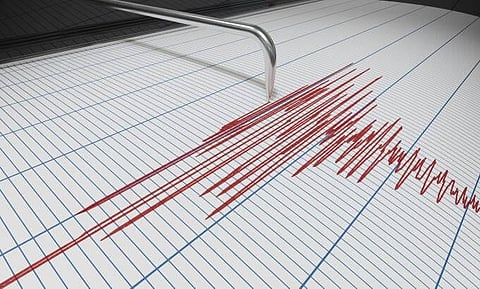
- Home
- Live Blog
- Breaking News
- Top Headlines
- Cities
- NE News
- Sentinel Media
- Sports
- Education
- Jobs

Top earth scientists and seismologists at an international conference at IIT-Mandi last week are of the unanimous view that a big earthquake is imminent in the Himalayan region – the Northeast in particular. They are also sure of its large-scale devastation. But what is of utmost concern is that they do not know when the calamity will hit. The quake they are talking of is a huge tremor measuring over eight on the Richter Scale. This will doubtless unleash a reign of havoc both on human lives and material wealth. One would recall the devastation caused in Nepal by the quake of 2015 – and this is a Himalayan region. But what is hugely perturbing is that seismologists are now talking of a bigger one in the highly seismic Northeast. It is also too fearsome to think of a tremor far more devastating than the one that rocked Assam in 1950. At IIT-Mandi, earth scientists were seized by the question as to whether “we are ready for a big one”. By the look of things, we are not!
To quote Prof CP Rajendran of the Jawaharlal Nehru Centre for Advanced Scientific Research, Bengaluru, “There is a consensus among all seismology groups, including international ones studying the Himalayas, that a great earthquake is imminent. The studies have clearly indicated the strain that is building up, and the earthquakes that have occurred in the recent past have not been able to release the strain.” The top earth scientist says we are entering “a period of earthquake generation” and “with the explosive increase in population and a disregard for safety, a relatively large earthquake can be quite disastrous for the region”. Another top seismologist, Supriyo Mitra, who is a Professor of Earth Science at the Indian Institute of Science Education and Research (IISER), Kolkata, says, “We know very well (emphasis added) where these earthquakes are going to happen with what sort of intensity. But it is difficult to say when it will happen.” So, that is the biggest worry – that no one knows the time when the big quake will hit and unleash terror.
According to scientists, the Himalayas’ rise was due to the collision of the Indian tectonic plate with the Asian plate. It is one of the youngest and most active (from the seismological point of view) mountain ranges in the world. The difference in the relative movements of the Indian and Asian plates is causing the Indian plate, which is faster, to push under the Asian plate, and, as a result, there is a gain in the height of the Himalayas. Even as the gain is little, there is a huge friction between the two gigantic plates, and this friction is stored as strain energy. This energy needs to be released every now and then, which leads to quakes, both small and large. The one the scientists are now predicting will be a huge one, perhaps even crossing the 1950 Assam quake of 8.7 magnitude, and the grim portent is that the Northeast, seismically quite vulnerable, is going to be the worst victim!
Are we heeding the wake-up call? One must remember that an earthquake, per se, does not lead to any large-scale destruction. It is the concrete structures – the huge and tall buildings that have come up in recent times in the region – built without adhering to safety norms, thanks of course to human greed, that crumble and kill people. A team led by Prof Durgesh Chandra Rai of the civil engineering department of IIT-Kanpur has found that a large number of structures that crumbled during the Sikkim, Kashmir and Manipur tremors lacked proper enforcement of building codes. Take the case of Guwahati, or, for that matter, Shillong where in recent times a whole gamut of concrete structures have sprung up, including residential apartments. How many of these are really attuned to safety codes? Are all builders adhering to the well-laid-down norms? Is there any reality check on the ground? Have the ones found guilty of violating such codes – if any at all – faced any music? These are issues of immense gravity that cannot be glossed over at a time when there is already a clear warning as to what might befall the people of the region. Disaster response and management – that’s the area where all the State governments of the Northeast must focus on and come up with tangible roadmaps, along with, of course, generation of awareness among the people as to what should be done and what should not be.